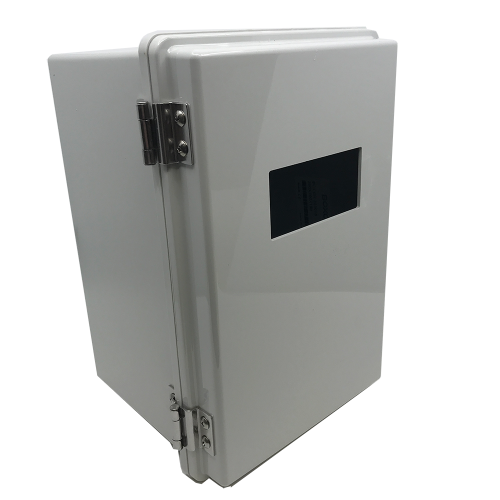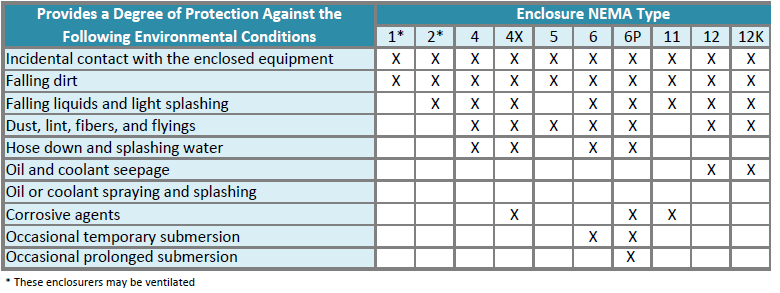In today’s technologically advanced world, electrical equipment plays a pivotal role in our daily lives. From industrial machinery to household appliances, these devices power our world. However, the safety and functionality of electrical equipment is not just about proper installation and maintenance. It also involves understanding and implementing the appropriate protection standards. One essential aspect of this is NEMA ratings.
NEMA, or the National Electrical Manufacturers Association, is a trade association based in the United States that represents manufacturers of electrical equipment. NEMA ratings are a standardized system used to classify and define the level of protection an electrical enclosure or housing provides against environmental elements, such as dust, water, and corrosive substances. These ratings are essential for selecting the right equipment for specific applications, ensuring durability, and maintaining safety standards.
NEMA’S History
The history of NEMA traces back to the early 20th century. During this time, the electrical industry was experiencing unprecedented growth and transformation. Established in 1926, NEMA emerged as a response to the pressing need for standardized practices within the US’s growing electrical manufacturing sector. This period saw tremendous innovation in the electrical industry. Milestones like utilizing electricity for lighting, power, and communication for the masses became achievable. However, this rapid expansion brought with it a host of challenges. Manufacturers struggled with inconsistent quality, safety concerns, and no standardized industry practices. Recognizing these issues, a coalition of electrical manufacturers and organizations came together to address these challenges collectively. This shared vision ultimately led to the formation of NEMA in 1926.
Throughout history, NEMA has consistently worked towards establishing and upholding industry standards, codes, and regulations. As technology evolved and industry practices changed, NEMA adapted accordingly. It expanded its purview to encompass a wide range of electrical and medical imaging equipment standards. Concurrently, NEMA activel engages in advocacy efforts, by promoting the responsible and sustainable growth of the industry.

NEMA today remains a stalwart organization in the electrical manufacturing sector, serving as a vital nexus for innovation, safety, and sustainability. As technology continues to advance at a breakneck pace, NEMA’s enduring commitment to establishing and updating industry standards is more critical than ever.
The Importance of NEMA
In industrial environments, electrical equipment often operates in harsh conditions. The exposure to dust, water, and other contaminants are common occurences. NEMA-rated enclosures protect critical automation components, such as PLCs and control panel from the elements. This reduces the risk of equipment failure, electrical hazards, and costly downtime. By adhering to the appropriate NEMA rating standards, industrial automation systems can maintain their functionality, reliability, and safety in very demanding settings. This reduces downtime, and lower maintenance expenses, resulting in significant cost savings over time.
NEMA ratings also contribute to compliance with regulatory standards and industry best practices. Various industries, including pharmaceuticals, food processing, and petrochemicals, are subject to stringent regulations regarding the protection of electrical equipment. NEMA ratings provide a standardized and recognized framework that ensures regulation compliance. By choosing enclosures with appropriate NEMA ratings, industrial automation facilities can demonstrate their commitment to safety and environmental responsibility. They also avoid potential legal and regulatory penalties associated with non-compliance.
Breaking Down the NEMA Rating
NEMA ratings get represented by a combination of numbers and letters. Each element conveys information about the enclosure’s capabilities. When broken down, components in a NEMA rating include:
- NEMA Type: The rating begins with the letters “Type,” followed by a number that indicates the general environmental conditions for the designed enclosure. For instance, Type 1 enclosures are designed for indoor use to provide basic protection against dust and falling dirt, while Type 4 enclosures are suitable for outdoor use, providing protection against water and dust.
- Indoor/Outdoor Rating: Some NEMA ratings are explicitly designed for either indoor or outdoor use. Indoor enclosures primarily protect against dust and other non-liquid contaminants, while outdoor enclosures provide protection against the elements, including rain, snow, and windblown dust.
- Protection Level: The next number in the rating represents the level of protection against solid objects (like dust and dirt). Higher numbers indicate better protection. For example, a NEMA 4X enclosure offers a higher level of protection against dust and moisture compared to a NEMA 4 enclosure.
- Protection Against Water:. The X signifies that the enclosure’s water protection level has not been assessed or is not a primary concern. The number following the X indicates the enclosure’s protection level against water. A higher number implies better protection. For instance, a NEMA 4X enclosure provides protection against water splashing and hose-directed water, making it suitable for washdown environments.
- Additional Features: Some NEMA ratings include additional letters that indicate specific features or attributes of the enclosure, such as resistance to corrosion (C), oil-tight (O), or resistance to ice formation (F). These letters are optional and may vary depending on the manufacturer’s specifications.
A list complete list of NEMA enclosure types and ratings can be found here.

Choosing the Right NEMA Rating
Selecting the appropriate NEMA rating for your electrical equipment is critical to ensure its longevity and reliability. When choosing what rating is right for you, these factors are important to consider.
- Environmental Conditions: Assess the environment before installing the equipment. Is it an indoor or outdoor setting?Does it account for specific contaminates like dust or moisture? The NEMA rating should align with the environmental conditions.
- Industry Regulations: Depending on your industry or region, there may be specific regulations or standards that dictate the required level of protection for electrical equipment. Always comply with these guidelines.
- Future Expansion: Anticipate any changes or expansions in your facility that might affect the environmental conditions. Select a NEMA rating that accounts for potential alterations in the equipment’s operating environment.
Conclusion
NEMA ratings are invaluable tools in ensuring the durability and safety of electrical equipment. By understanding these standardized codes and applying them correctly, individuals and organizations can make informed decisions when selecting enclosures for their electrical components. This not only safeguards the equipment but also minimizes the risk of accidents and costly replacements. When tasked with choosing electrical enclosures, remember to decode the NEMA rating to ensure the right level of protection for your specific needs.
Updated on December 7, 2023 by Joe Kaminski